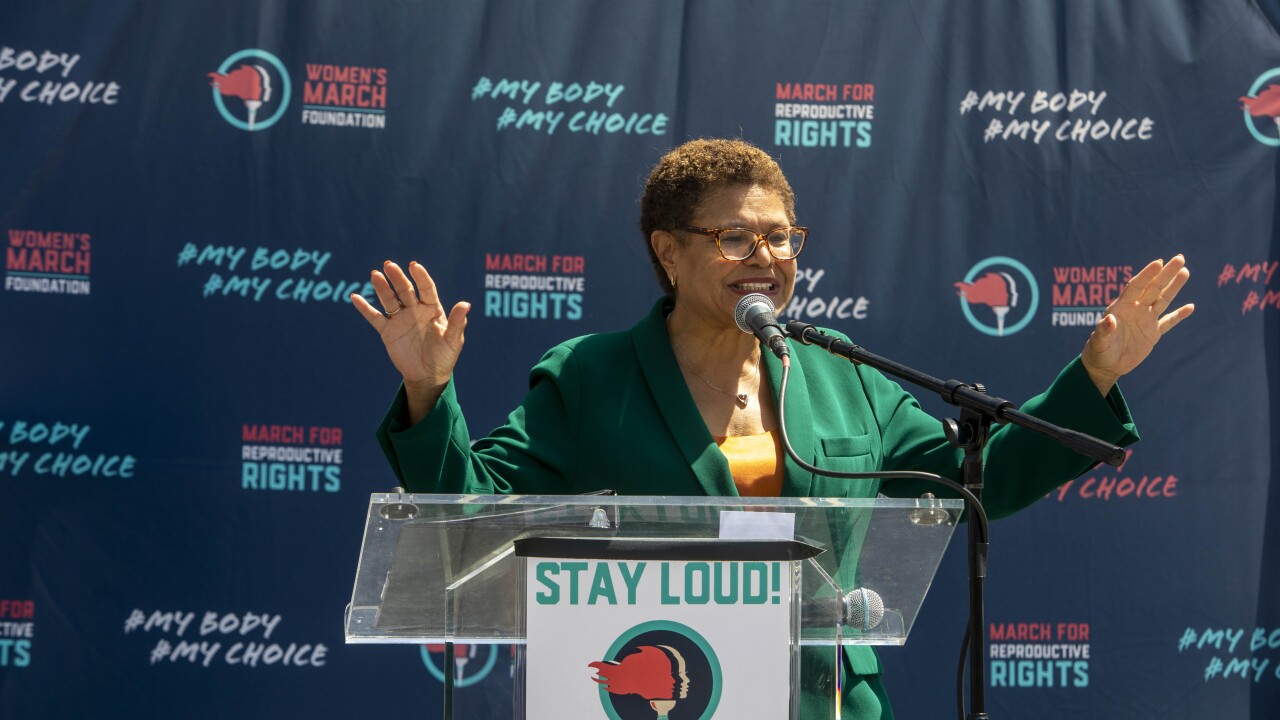PHOENIX — The issue of how much information should be disclosed for certain variable-rate demand obligations has put the National Association of Bond Layers at loggerheads with the Securities and Exchange Commission staff for years. The ongoing dispute boiled over once again during NABL’s Bond Attorneys Workshop here this week.
The issue has revolved around whether issuers should disclose detailed information about the underlying obligor or borrower on their VRDOs.
While governmental borrowers typically disclose such information, privately held companies that issue VRDOs through municipal conduits often do not wish to publicly disclose their financial information. Short-form disclosure is used and the investor is instructed to base their investment decision solely on the strength of the provider of the direct-pay letter of credit.
Under a direct-pay letter of credit, a bank typically agrees to pay debt service and to provide funds for the purchase of the notes if they cannot be remarketed.
Bond attorneys here were grateful that the SEC’s municipal securities chief, Martha Mahan Haines, clarified in remarks Wednesday that a proposed rule change would not alter the long-accepted market practice in which the format of disclosures for VRDOs in the primary market determines the format of the bonds’ continuing disclosures.
In other words, if a new issue goes to market with short-form disclosure, in which the offering statement only includes information on the LOC provider, the continuing disclosures would as well. The proposed amendments would require continuing disclosure of financial information and operating data about the enhancer as well as the notices of material events about the bonds.
But the same attorneys bristled after Haines delivered a rhetorical slap in the face to NABL, criticizing the group for not embracing long-form disclosure for VRDOs in a recent comment letter with to SEC.
Specifically, NABL said that while it welcomed changes to the SEC’s Rule 15c2-12 on disclosure that would remove a 20-year exemption for VRDOs from continuing disclosure undertaking, the SEC should clarify that the rule change would not require disclosure about underlying obligors.
“I have to say that I was really stunned by the comment about no need to include information on the underlying obligor after the events of the last year and a half,” Haines said during the group’s general session Wednesday. “We’ve just experienced the worst financial crisis since the Great Depression, including the failures or forced marriages of major commercial and investment banks.”
She added that issuers and conduit borrowers have been scrambling to come up with replacement letters of credit, to change the modes on their VRDOs, and to buy back or refund their outstanding bonds.
Further, she said that bond insurers, which were formerly revered, “fell hard off their pedestals, as did the credit rating agencies.”
Add the collapse of the auction-rate securities market, and “investor confidence in the muni market right now is fragile at best and robust recovery remains in the future, especially when you look at state financial situations,” she said.
As a result, Haines said she is unconvinced by the argument that investors don’t need underlying information because they can just put their bonds whenever they want to sell.
“I’m regularly told and there are comment letters [from investors] saying that they want information about the underlying credit and the letter of credit-backed and insured bonds, including bonds with demand [or put] features,” she said. “It seems to me that the real question you seem to be asking is whether the omission of information about the borrower makes the other statements in the offering statement misleading?”
Though the answer to that question depends on specific facts and circumstances, Haines stressed that SEC staff have repeatedly made it clear that they believe information about the underlying credit should be disclosed. She cited an interpretive release from 1994 amendments to the rule, which she said indicated that disclosure provided by nongovernmental conduit borrowers should be “substantially the same” as if they borrowers were selling debt in the corporate markets.
But John McNally, a partner at Hawkins Delafield & Wood LLC in Washington and president-elect of NABL, said that any notion that attorneys do not listen to investors is wrong.
He also pointed out that when the SEC adopted the original primary market disclosure provisions of 15c2-12 in 1989, their release said that the commission believes “the presence of credit enhancement generally would not substitute for material disclosures concerning the primary obligor on municipal bonds.”
However, the statement in the 1989 release cited a previous report published in 1987 that addressed disclosure in the context of securities backed by insurance policies, not LOCs.
“No one disagrees that there should be full disclosure of the underlying obligor in a situation where the credit enhancement is an insurance policy,” McNally said. “The disagreement is the form of primary disclosure if a credit enhancement is not an insurance policy but a direct-pay letter of credit and the bonds can be put back to the issuer generally with seven days notice.
“In that context, the market accepts what we refer to as short-form disclosure, where we advise investors that they should look only to the credit enhancement, and accordingly, no underlying disclosure about the obligor,” he added. “That is accepted market practice. Neither investors nor underwriters are demanding long-form disclosure if the bond has a direct-pay LOC.”
McNally said he was speaking on his own and not on behalf of the NABL board.





